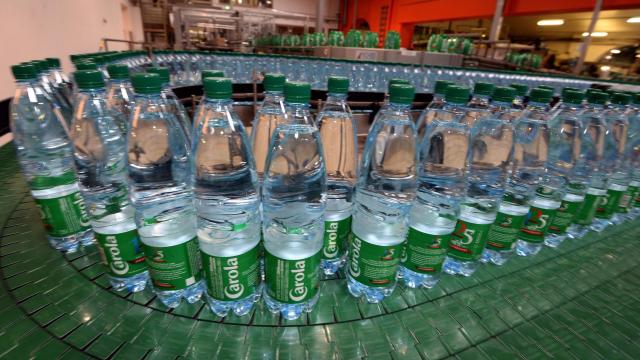Forget seeing a glass as half-full or half-empty. The best drinking-water-based test of your outlook on life is whether you’re shocked to find out that some bottle water is just tap water, or if you’re so cynical you’d be shocked to find out that any of it isn’t. The truth is, in fact, somewhere in the middle.
Back before the explosion in bottled water that happened somewhere around the ’90s, the only reason to put water in a bottle was if something was special about that water. Some of those special kinds of water included:
- Spring water, derived from a specific place on this earth where water flows from underground to an accessible spot on the surface
- Mineral water, which is generally spring water from a place with a lot of dissolved minerals in the water
- Sparkling water, which has bubbles (and which in some cases is also a type of mineral water)
- Distilled water, which can come from anywhere but the important thing is that it has had its minerals removed
Somewhere along the lines, though, the companies that bottle soda and other drinks thought: Hey, why not just bottle some tap water as well?
And so they did, and it sold just fine. Because they were correct to notice that most of the time, when somebody drinks a bottle of spring water, it’s not because they care to taste that particular spring. They’re just thirsty and want some water.
How to tell where bottle water comes from
There’s an easy way to find out which bottled water comes from where: Reading the small print the label. Somewhere, usually on the back in fine print, the water will say where it comes from. If it came from a special fancy spring, you can be sure that it will give the name of the spring.
Water that starts as tap water will say that it comes from a “municipal water source” or “community water source,” and may give the name of the water company. That doesn’t necessarily mean that the water is just tap water, just that tap water was the starting ingredient. Many brands, like Dasani and Aquafina, are careful to note that they purify their water and they may add minerals for flavour. The exact process will vary from brand to brand.
Water, after all, is more than just water. Tap water, spring water, well water, and any of the other drinkable waters in this world have minerals dissolved in them, and sometimes a variety of other chemicals as well: Some are unintentional contaminants (like lead), some are added on purpose (like fluoride and chlorine), and some are naturally occurring and mostly harmless (like magnesium and calcium).
Tap water and bottled water are regulated differently; both are required to be safe to drink, but laws differ on the details of how they’re tested, and for what. The Food and Drug Administration regulates bottled water safety and labelling, while the Environmental Protection Agency sets safety standards for tap water. Both are fine to drink, so to be honest, I’d choose a water based on its price, taste, and environmental impact (bottles are trash, after all) rather than on any concerns about what’s in the water.

Leave a Reply
You must be logged in to post a comment.